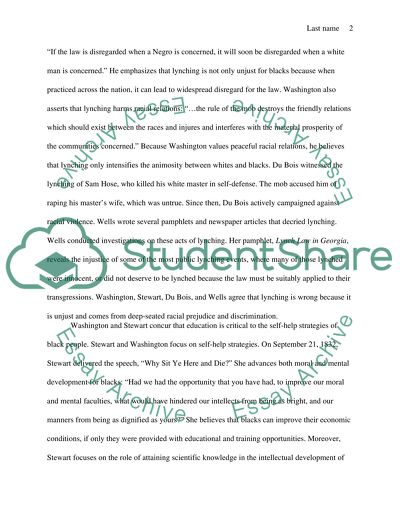Cite this document
(“Booker T. Washington, Maria W. Stewart, W.E.B. Du Bois, and Ida B Essay - 1”, n.d.)
Retrieved from https://studentshare.org/literature/1615375-booker-t-washington-maria-w-stewart-web-du-bois-and-ida-b-wells
Retrieved from https://studentshare.org/literature/1615375-booker-t-washington-maria-w-stewart-web-du-bois-and-ida-b-wells
(Booker T. Washington, Maria W. Stewart, W.E.B. Du Bois, and Ida B Essay - 1)
https://studentshare.org/literature/1615375-booker-t-washington-maria-w-stewart-web-du-bois-and-ida-b-wells.
https://studentshare.org/literature/1615375-booker-t-washington-maria-w-stewart-web-du-bois-and-ida-b-wells.
“Booker T. Washington, Maria W. Stewart, W.E.B. Du Bois, and Ida B Essay - 1”, n.d. https://studentshare.org/literature/1615375-booker-t-washington-maria-w-stewart-web-du-bois-and-ida-b-wells.


